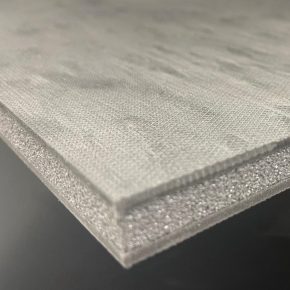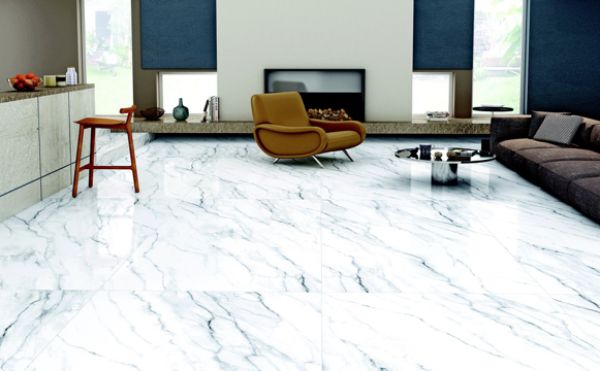
Tiles and tribulations: how professional tilers can change with the times
As we step further into the 21st century, we have reached such rapid levels of development that our industries must continually evolve or face extinction entirely. With question marks over our environment and technology evolving at breakneck speed, it can be hard to know which direction the industry will take next.
In today’s post, we’ll be exploring today’s tiling industry, what’s happening and what’s to come – so you can move with the times and stay on top of the latest developments.
Interior design trends
The shifting aesthetics in the world of tiles is nothing new – from Egyptian settlers to modern day apartment blocks, a lot has changed in terms of style. As trends come and go, the tiling industry, and the wider construction industry as a whole, are increasingly monitoring the flag-bearers in interior design – who dictate the fashion course of the months and years ahead. Suppliers now stock vast swathes and varieties of tiles to accommodate the rapidly changing tastes of the public, and increased demand for material replicas has upped the need for innovation and creativity in the industry.
Tiles are changing not only in terms of their style, but in their physical form, too. The standard shape, size and weight of tiles has been modified into a modern specification, with wall tiles becoming thinner to reduce laying time and overall weight (and, subsequently, transportation costs). Tiles also tend to be larger in width for the same reason, making DIY home renovation an increasingly appealing and feasible prospect for homeowners looking to save money – which can be either a benefit or a drawback for the tiling industry, depending which end of the supply chain on which you sit.
Technological advances
Technology and tiles don’t feel like an obvious match; for an industry that has existed and thrived for nearly 7,000 years on a handful of core principles, new technology does not seem best placed to be interfering. When we think of tech, we often imagine gadgets and complex software – but the reality can be different, and often a lot more subtle.
An example of technological advances in tiling can be seen in the increasingly popular ‘mock’ tiles that imitate other classic materials, like wood or marble. Recent developments in tile manufacturing mean that we can produce almost like-for-like porcelain equivalents of many materials at a lower cost, and with lower environmental impact than their ‘real’ counterparts – making these copycat tile types an appealing prospect for designers and homeowners.
A subtle improvement to modern day tiles can be found in their design, which has improved exponentially over recent decades. Fresh developments in the printing industry, focusing on improved accuracy and a reliance on computer programs, provide tilers with increasingly detailed and realistic-looking tiles at no greater cost – opening the doors to all sorts of possibilities for patterns and images in the future. Either way, whether you’re a consumer or retailer, manufacturer or supplier, new advancements are brimming with potential and expanding on the practical applications of tiles globally – so embracing them can be the only obvious course to take.
Sustainability questions
As society evolves, the ever-present issue lingering over our planet is that of sustainability. A huge driving force behind the development of new technologies in recent decades, the need to alter and update our services and systems to sustainable alternatives will limit our impact on the planet in the short-term, and make sure it’s here for the generations of the future in the long-term. In the construction industry in particular, the emphasis on sourcing ‘green’ materials has led to innovation across the board, with suppliers becoming more and more focused on achieving green standards of manufacture and service – shooting for accreditation in green schemes like BREEAM.
A more general shift towards lower emissions, better working conditions, renewable energy in manufacturing and recycling has rubbed off on the tiling industry, too. In today’s market, construction companies wear sustainability like a green badge of honour, and many now operate checks on their suppliers to ensure certain standards are upheld – so it’s in the best interests of suppliers to apply the necessary resource to achieve those standards or face losing valuable business opportunities.
Tiles may have been around for thousands of years, but it’s essential that each industry can adapt to the changing social, economic and political landscape we are all a part of. From new technologies to physical reforms and environmental issues, it’s clear that the tiling industry is going through a period of significant change. Knowing where the change is happening is the difficult part – but with our guide, you can stay on top of the latest movements.
Latest news

29th April 2024
Hush: New Hushlay options offer acoustic upgrade potential
Leading UK acoustic systems manufacturer Hush Acoustics has introduced two additional variants of its Hushlay Soundmatting product.
Posted in Acoustics, Noise & Vibration Control, Articles, Building Industry News, Building Products & Structures, Building Services, Facility Management & Building Services, Floors, Innovations & New Products, Insulation, Restoration & Refurbishment, Retrofit & Renovation
29th April 2024
Digital Construction Week 2024 speaker programme announced
The programme at Digital Construction Week is carefully designed to help you keep up with the fast pace of innovation in the built environment.
Posted in Articles, Building Industry Events, Building Industry News, Building Products & Structures, Building Services, Exhibitions and Conferences, Innovations & New Products, news, Posts, Restoration & Refurbishment, Retrofit & Renovation, Seminars, Sustainability & Energy Efficiency
29th April 2024
Steel Window Association - for the specialists in domestic and commercial refurbishment of steel windows
The UK-wide Steel Window Association members are the established, proven experts in the renovation and sympathetic refurbishment of steel windows and doors in both domestic and commercial premises.
Posted in Architectural Ironmongery, Articles, Building Associations & Institutes, Building Industry News, Building Products & Structures, Building Systems, Doors, Glass, Glazing, Restoration & Refurbishment, Retrofit & Renovation, Steel and Structural Frames, Windows
29th April 2024
The Rooflight Association: Rooflights & Fire Regulations - what you need to know
The Rooflight Association has published a series of ‘Quickguides’, covering the fire rating requirements for use of rooflights in buildings for each of the four devolved UK nations.
Posted in Articles, Building Associations & Institutes, Building Industry News, Building Products & Structures, Building Regulations & Accreditations, Building Services, Ceilings, Health & Safety, Innovations & New Products, Lighting, Publications, Restoration & Refurbishment, Retrofit & Renovation, Roofs, Security and Fire Protection, Walls, Windows
 Sign up:
Sign up: 